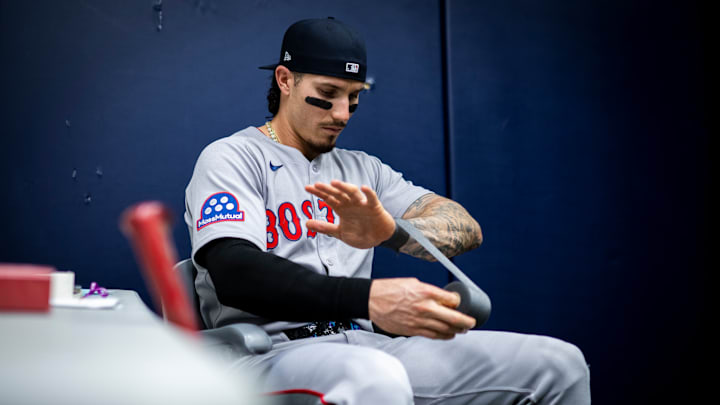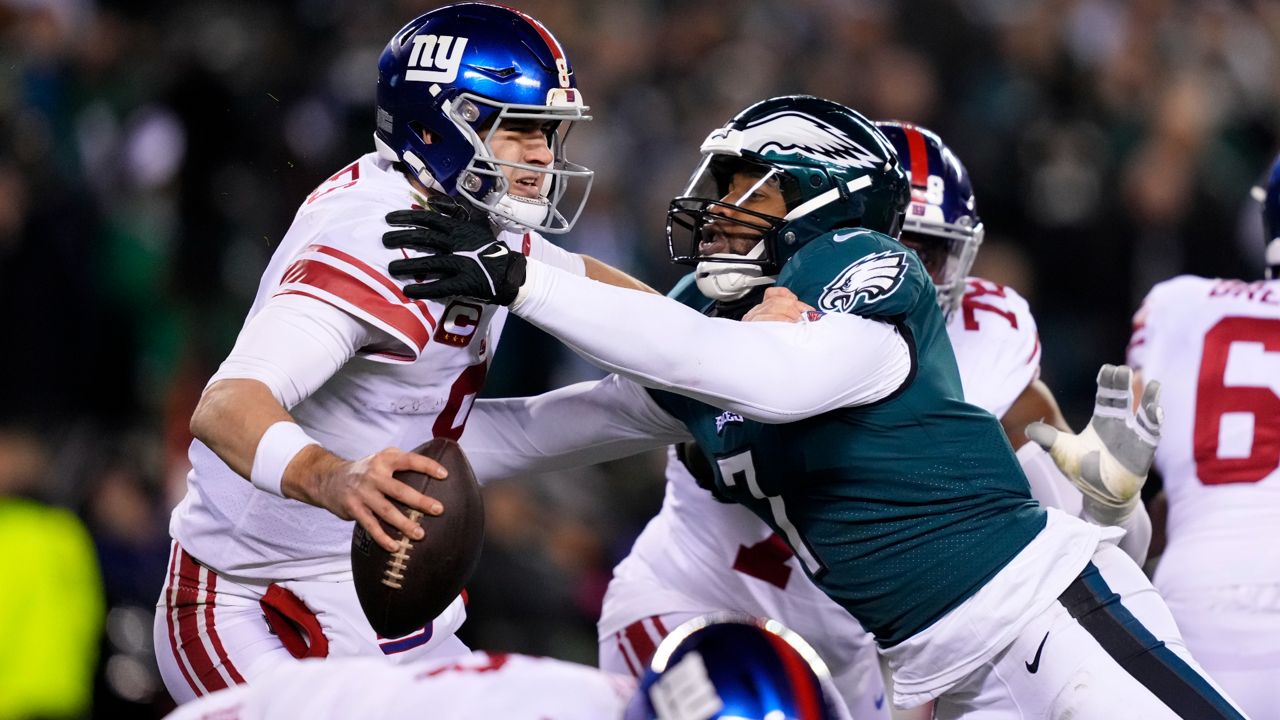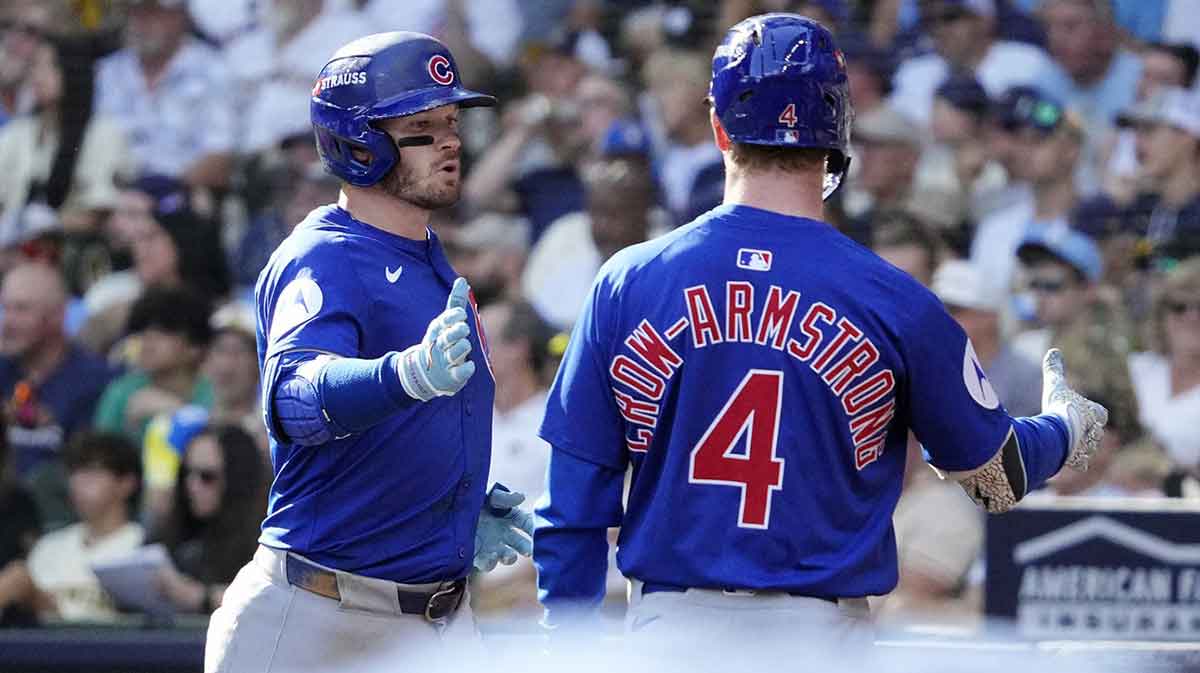3 Red Sox offseason moves Craig Breslow just made all too obvious
The Boston Red Sox were eliminated in the AL Wild Card by the New York Yankees of all teams, much to the chagrin of a tortured fanbase. This was overwhelmingly a positive season for the Red Sox, but it wasn't without significant bumps in the road. The Rafael Devers trade. The onslaught of pitching injuries. Roman Anthony's season-ending oblique strain. A lot went wrong, and it culminated with a deflating loss in the Bronx.

That said, there's every reason for Boston fans to be optimistic about what's to come. Anthony is a real-deal superstar. Garrett Crochet blossomed as a proper ace. Marcelo Mayer and Kristian Campbell are coming down the pipeline quickly, and they're far from alone. Boston is very much on the right path.
Still, after Breslow fumbled the Devers situation and whiffed at the trade deadline, the pressure is on. The Red Sox cannot stand pat this offseason. There are clear avenues to improving this roster and taking the next step in the ultra-competitive AL East. It sure sounds like Breslow, to his credit, has a few changes in mind already.
Here's what we already know about Boston's offseason plan.
For more news and rumors, check out MLB Insider Robert Murray’s work on The Baseball Insiders podcast, subscribe to The Moonshot,
Red Sox will look to upgrade their first-base situation
Boston was operating with a gaping hole at first base all season long. Triston Cases suffered a gruesome season-ending leg injury 29 games in, but he wasn't exactly lighting up the scoreboard prior going down. Casas finished with a .182 average and .580 OPS in 99 at-bats. We know he's capable of much more, but Breslow refused to commit to the 25-year-old in his most recent presser.
Craig Breslow would not commit today to Triston Casas being his first baseman in 2026, nor would he say they will certainly look elsewhere. Says Casas has missed a significant amount of time but they also have seen what he's capable of.
Boston's simplest solution was moving Rafael Devers to first base, but the disgruntled ex-third baseman essentially refused to learn a new position after the Red Sox blindsided him with a move to DH. (He later picked up first base with the Giants, of course.) The Nathaniel Lowe signing down the stretch gave Boston a half-decent stopgap, but there is no clear solution on the roster right now. Lowe is set to become a free agent.
Campbell spent a good chunk of 2025 learning first base with Triple-A Worcester, so there's a chance Boston attempts to plant him there next season. That makes a lot of sense, especially if Alex Bregman and Trevor Story both re-sign, which would force Marcelo Mayer to second base. Campbell has utility in the outfield as well, but Boston already has a logjam there (more on that later).
We could also see the Red Sox peruse free agents. Whether it's Pete Alonso (a Bregman alternative?) or Paul Goldschmidt (a Yankees turncloak?) remains to be seen, but Boston has the resources to go big if Breslow wants to.
Red Sox are going to target a second ace behind Garrett Crochet
Boston settled on Dustin May as their big pitching upgrade at the trade deadline, as Breslow forgot that an "upgrade" entails a
The Red Sox were connected to marquee pitching names around the deadline, such as Minnesota's Joe Ryan or San Diego's Dylan Cease. But in the end, Breslow decided to roll the dice on the group he began the season with. That was a catastrophic error. We know the price for top pitchers in unbelievably high these days, but for a team as close to contention as Boston, it's worth paying.
We can expect the Twins to revisit Ryan trade talks this winter. Cease is a free agent. Other noteworthy arms on the market, such as Framber Valdez, Zac Gallen and Ranger Suárez, could also end up on Boston's radar. There are plenty of options, and Breslow seems to understand the value of putting that second ace behind Crochet.
Craig Breslow on the need for another impact starter:
“Every team gets better if you can bring in a starter or develop a starting pitcher that can pitch at Garrett Crochet’s level, there’s no running from that. And we’ll be as aggressive as we can in trying to chase that down…"
This is probably the most consequential task on Breslow's plate this winter. The Red Sox offense will be more or less fine, depending on health. But this pitching staff needs a shot in the arm. If Boston can solidify the rotation around Crochet and enter next October with three or four truly dependable arms, there's not much standing between the Red Sox and a deep run.
Red Sox appear destined to trade Jarren Duran
Boston fans have been ready to trade Jarren Duran for a hot minute. This was not a bad season from the 29-year-old, who posted a .774 OPS and 114 OPS+ with 16 home runs and 24 stolen bases, but the Red Sox outfield is overflowing at this point and Duran's negative quirks — primarily on defense — are a source of tremendous frustration. We all saw it on that strange Giancarlo Stanton double in Game 3 of the Wild Card.
Roman Anthony and Ceddanne Rafaela aren't going anywhere. In fact, the Red Sox need to get the latter in centerfield more consistently. Too often Boston's outfield surplus forced Rafaela to second base this season. A trade will come down to either Duran or Wilyer Abreu, from the sound of it. Factoring in age and defensive acuity, it feels like trading Duran is the clearly preferable option.
Breslow on managing the surplus of outfielders in the offseason:
“Everything has to be on the table as we think about improving the team in 2026”
Cedanne and Roman are likely off-limits. A trade will be down to Wilyer and Duran.
Duran's contract is controllable through 2028 with an $8 million club option for next season. That's a sweet deal relative to his talent, so Boston won't have trouble drumming up interest. Plenty of teams need help in the outfield. Still in the prime of his career, Duran was the All-Star Game MVP just a year ago, so there is considerable upside. The Red Sox aren't trading him for performance reasons; he's just the weakest link in a four-man outfield group that can only sustainably harbor three.
It sure seems like Breslow knows exactly what the Red Sox need to do this offseason. Trading Duran can boost an already-excellent farm system or perhaps even help Boston add MLB-ready pitching help. Either way, that's the biggest domino in what could be a chaotic offseason in Beantown.
Seahawks TE AJ Barner 'A Spark Plug For Our Whole Football Team'

Not long after Eric Saubert signed with the Seahawks this spring, he met new teammate and fellow tight end AJ Barner, and the second-year player made a memorable first impression on the ninth-year veteran.
Despite being a fourth-round pick who was coming off a solid, but statistically unspectacular rookie season, Barner was unafraid to share lofty ambitions with a new teammate. And more importantly, he was willing to then put in the work throughout the offseason to help reach those goals.
"The first time I met him when I got here, that was one of the first things he told me," Saubert said. "He said he loves football and he wants to be great and leave his mark on this team. You can see it in his actions as well. He's not someone who just talks about it, he goes about his day, he puts the work in, he gets to work on his body, he studies the play, he wants to make sure every box is checked, which is cool."
After a solid rookie campaign in which he started five games and played 46 percent of Seattle's offensive snaps, Barner is now Seattle's top tight end both in terms of playing time and production, starting all five games and playing 79 percent of the offensive snaps. And with four touchdowns in five games, including two last Sunday, Barner has matched his 2024 total, and with 14 catches for 134 yards, he's pacing well ahead of last year's stat line of 30 catches for 245 yards. And he means a lot more to the offense than those passing numbers, doing plenty of the dirty work in the trenches that comes with that position, blocking in the running game and helping protect quarterback Sam Darnold.
Barner hasn't played himself into the conversation as one of the league's elite tight ends, at least not yet, but his play is turning heads among his own teammates and coaches.
"He's a spark plug for our whole football team," Seahawks coach Mike Maconald said. "This guy's got a great mentality. He's got swag to him. He's got an edge. He's got toughness. He's got a great spirit about him, where it's not just for our offense, but cares about our football team, and we love him for it. He's doing a tremendous job. He's done a lot of unselfish work on our offense a lot of the time. In the pass protection and run game, he takes a lot of pride in all those things. As we like to say, the ball finds energy, and when you do things right and do it consistently, you tend to get rewarded for that type of stuff, and I think that's what we're seeing with him. When we find him the ball, good things have been happening."
Said Saubert, "He's killing it. He's a big dude. You don't see many tight ends that are like 260-plus these days, especially with the skillset he has. He moves really well for his size and catches the ball really well. I was really impressed with the play on the scramble drill where he turned up, came back, made a nice sliding catch—you don't see many people that are like 265 that can do stuff like that. His skillset, his size and his desire to be a great player, all three of those things standout. He's one of the better young tight ends in the league, and he's only getting better, which is cool."
Like Saubert and other players, Macdonald heard in offseason conversations with Barner a player who was committed to taking his game to another level.
"That was our conversation at the end of the year on what we felt like he could become, and he shared the same feeling," Macdonald said. "The way he attacked the offseason, I'm not surprised. This is what we envisioned for him is being this type of player. But you've got to put the work in, you've got to go through all the steps. You can't just say it and show up and it happens, you've got to train, train with a purpose and intent, and do it every day, and that's what he does."
Despite playing on a national championship-winning team as a senior at Michigan, Barner came into the league without a ton of fanfare. He was viewed more as a blocking tight end and a special teams player—his draft bio on NFL.com read "improving as a run blocker but is unlikely to offer much as a pass catcher"—and fell to the fourth round before being selected by the Seahawks. And after his two-touchdown performance on Sunday, Barner acknowledged “you kind of put yourself in that box, you put limitations on yourself" after a college career at Indiana and Michigan in which he never was a featured part of the offense.
But after developing in college then arriving in the NFL, Barner began to view his future through a different lens.
"Once I got to Indiana, people felt like I had a good chance to go to the NFL. Then once I got to Michigan, and what my role was at Michigan, developed me for the NFL," Barner said. "When I got here, I felt like I had a good combination of the blocking, the pass pro, the catching. That was just the goal, and I think in my draft call, I mentioned that and anything that I do I obviously want to be very talented at it. Again, I just feel like I have the talents to do that."
Barner has been around elite tight ends, whether through the Tight End U offseason summit put on by Travis Kelce, George Kittle and Greg Olsen, or through the players he is around throughout the seasons, and he believes that he can get to that level.
"Right now, I have a lot of work to do, but I think my ceiling is right up there with them," Barner said when asked about the talented tight ends in the NFC West. "I had a great game this week and people are starting to take notice, but there's a lot more for me to do."
As for what elite means to Barner at his position, he said, "When you watch the film and you see guys that do it play in and play out and the techniques. They're moving guys off the ball, not just position blocking people and well-rounded in all those phases as well. You have some tight ends that really don't mix it up in the trenches, you have guys that are more just blockers, and you also have a lot of tight ends that do both. The state of the NFL that it's in there's some very talented players in this league, especially in our division, too. The Rams have great tight ends. George (Kittle), (Trey) McBride, the Cardinals, we watch all this tape, right? And you see these guys on tape because we're playing a lot of the same teams in the division. There's a lot of great tight ends in the league, but I think, the guys that can do it all are those unicorns."
Barner may not be considered a tight end unicorn only five games into his second season, but with how quickly he has risen from a fourth-round pick considered to be a blocking tight end to a key piece of a successful NFL offense, that goal doesn't seem so farfetched.
"Generally speaking, our philosophy—and John Harbaugh taught me this—is we take pride in having a vision our players bigger than they have for themselves," Macdonald said when asked about Barner. "That provides growth, that provides stretch, and it's our job as coaches to see it and make it come to life. AJ has had high expectations for himself, he's had high goals, and he's not afraid to make it known and go chase it. You see a guy like Jaxon (Smith-Njigba) who's the same way. These guys envision themselves as premier players at their position. That's what AJ's trying to do, and I think he's on his way."



